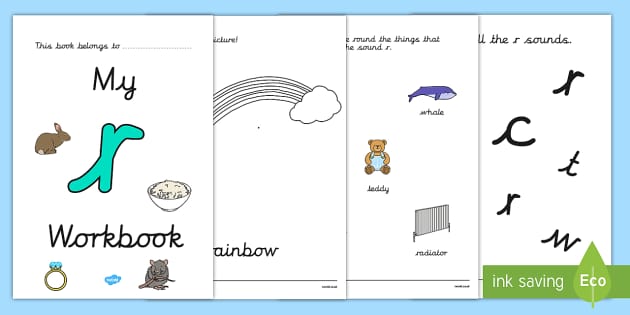

Use this cursive handwriting 'r' workbook to teach your class to practice and master writing the letter 'r' in cursive.
 cursive r
cursive r  handwriting practice sheets
handwriting practice sheets  cursive handwriting booklet
cursive handwriting booklet  cursive handwriting
cursive handwriting  cursive handwriting practice sheets
cursive handwriting practice sheets  letter formation
letter formation  pre cursive handwriting
pre cursive handwriting  cursive handwriting practice
cursive handwriting practice  cursive letter formation sheets
cursive letter formation sheets  letter r
letter r  handwriting
handwriting 
Use this cursive handwriting 'r' workbook to teach your class to practice and master writing the letter 'r' in cursive.
This workbook includes a number of activities which will allow your students to familiarise themselves with the cursive style as well as practising handwriting 'r'.
This method of teaching cursive is both stimulating and stress-free, allowing your students to develop their cursive handwriting skills at their own pace.
Cursive handwriting is a form of writing in which the letters are connected, in an attempt to write faster. As opposed to block-letters, in which the pen lifts between every letter.
It can also be called joined-up handwriting or script handwriting, although referring to cursive as script handwriting is less common.
Your child will get the opportunity to practise their cursive handwriting 'r' and improve it through a range of fun activities.
Hand-picked for KS1 English students, this workbook is designed to support their learning and help them to gain confidence in their handwriting skills as they go.
Cursive can be a fun and helpful tool when it comes to handwriting.
Not only does it make your handwriting look neater, but it also can help you write faster and more efficiently!
Joined-up handwriting also helps with motor skills and pen control, as well as helping to develop letter recognition faster.
It can be tricky to learn, but there are some simple tips to improve your child's handwriting!
1. Strengthen Fine Motor Skills
One of the key things to develop when it comes to neater handwriting is fine motor skills. Encourage your child to strengthen their fine motor skills and improve dexterity by doing tasks such as cutting out, colouring-in, sewing or any craft activity.
2. Use your turn, my turn when practising at home
When it comes to handwriting, it's important to ensure that your child understands letter formation and has good pen control. One way to practise this is to get your child to watch you write the letter (ensuring you're using the correct formation techniques) three times. Then, let your child try for themselves while you watch. Make sure you're looking out for pen direction and grip on the pen.
3. Practise, practise, practise
The best way to improve handwriting is just to practise! Make sure you're building plenty of breaks and try to find fun and engaging handwriting activities that your child will want to do.
Cursive handwriting, also known as joined-up handwriting or script handwriting, was first developed in the 17th Century.
Before the emergence of the typewriter, cursive handwriting was the preferred method of writing for professionals e.g. lawyers, doctors.
Cursive was known as 'fair hand' and was considered appropriate for important letters and documents.
There are lots of ways to support children when learning joined-up handwriting.
Before a child even begins to write, try to make sure that they're sitting upright, feet flat to the floor at a desk which is elbow height. Good posture is crucial when it comes to handwriting as posture affects shoulders and wrists which are both important in developing smooth handwriting.
Once posture is correct, many teachers and handwriting experts suggest teaching cursive letters in a certain order. Start with the letters that descend below the lines on the page, such as j, y, g. Then, get your child to write the same letter over and over to help build a flow.
Use the video below to get some more tips and tricks to help your class master the cursive handwriting 'r'.
 Home
Home  Membership
Membership  TwinklCares
TwinklCares  Create
Create  Blog
Blog 